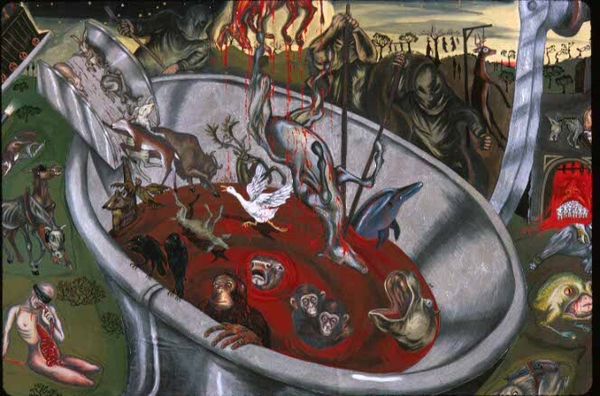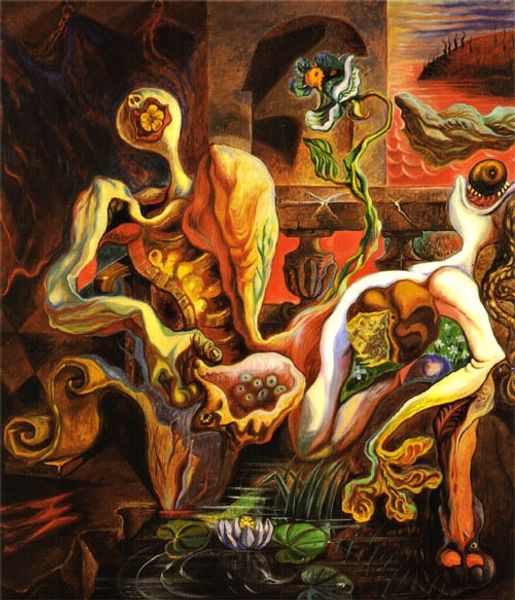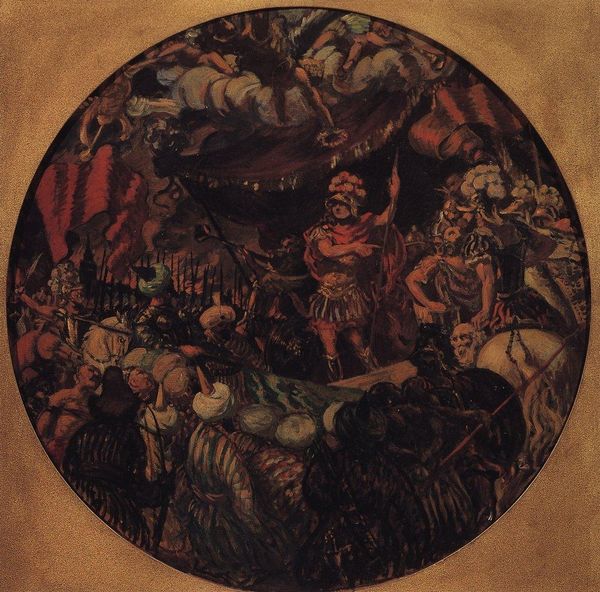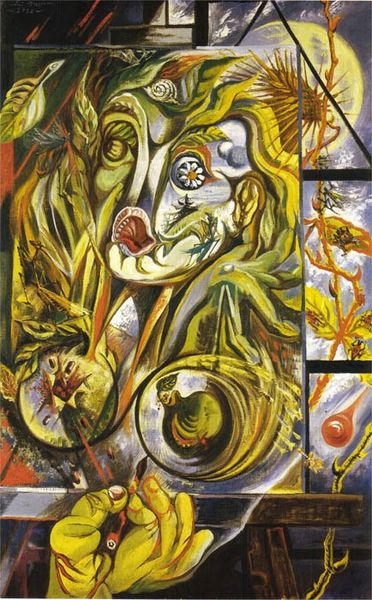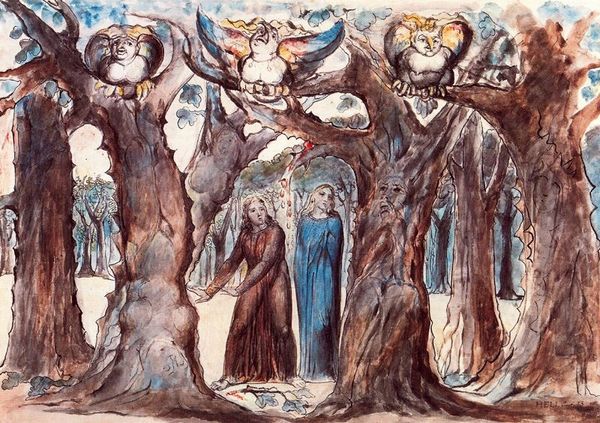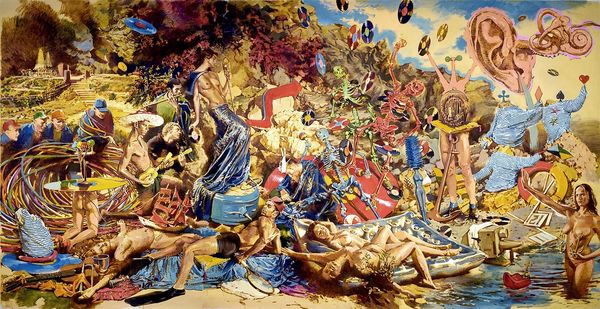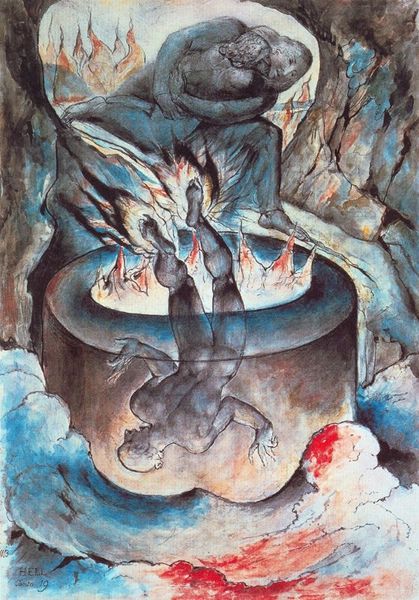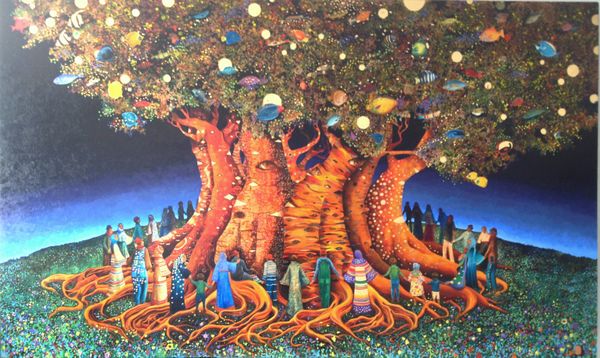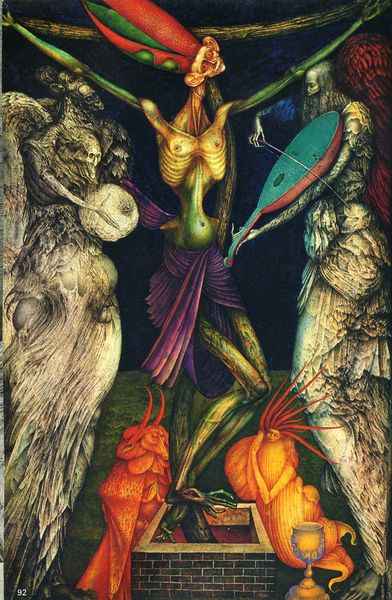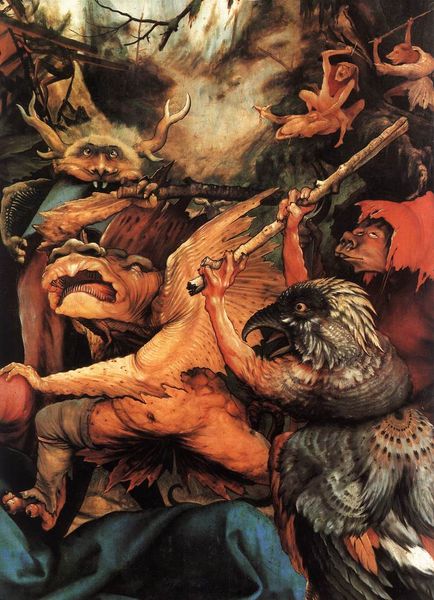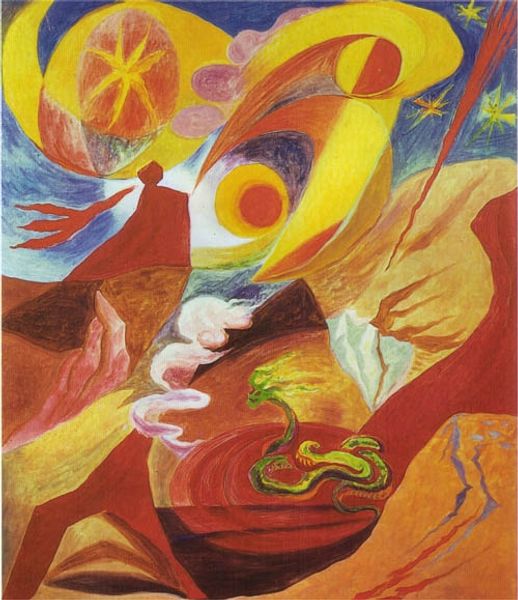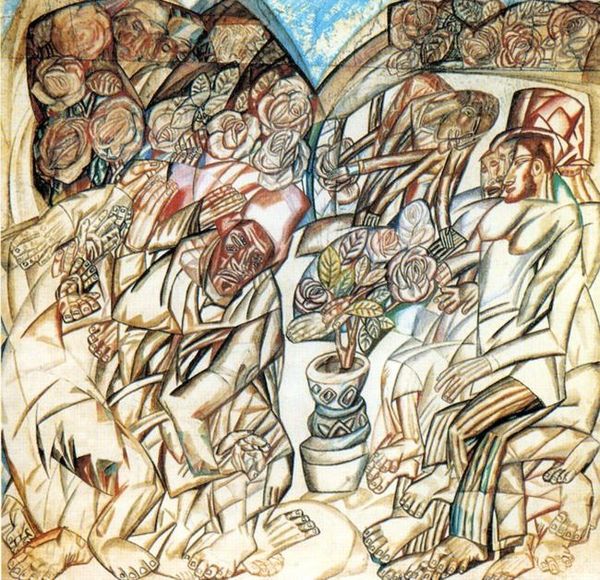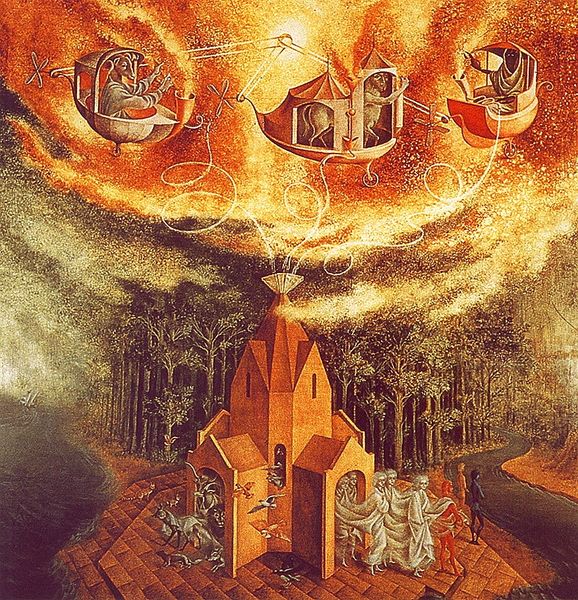
painting, mural
#
organic
#
narrative-art
#
painting
#
figuration
#
social-realism
#
mexican-muralism
#
mural
Copyright: Diego Rivera,Fair Use
Editor: We're looking at Diego Rivera's "The Hands of Nature Offering Water," painted in 1951. It feels…layered, almost like geological strata, with a really strong suggestion of subterranean activity. What strikes you most about this mural? Curator: What I see is Rivera linking the geological and the social, and frankly, making a pointed argument. Those immense hands cradling the earth draw attention to indigenous labor—mining, extraction—and how it quite literally shapes the land. But who benefits from that shaping? Who controls access to these resources? Editor: So you're seeing a connection between natural resources and class struggle? Curator: Absolutely. Think about post-revolutionary Mexico when this was painted. The mural becomes a powerful statement about land rights, about who has access to water, about the ongoing struggle for indigenous sovereignty and economic justice. Rivera consistently uses his art as a platform to advocate for the rights of marginalized communities and critiques the unequal distribution of resources and power. Editor: I hadn’t considered the indigenous element. What about the imagery of microorganisms and fossils? Curator: They serve as a reminder that the struggle isn't just a modern one; it’s deeply embedded in the historical, even geological, narrative of the land. This goes way back, inviting a look at water access not only as a question of political rights but also the impact of industrial practices. How these relate and potentially damage these ancestral grounds? Editor: It sounds like he’s saying exploitation on every level – human, environmental… Curator: Exactly. Rivera’s visual language is deliberately intersectional. This wasn’t just about national identity; it was about class, labor, and access, all woven into a single, potent image. Editor: I guess I'm walking away from this understanding just how overtly political his work is, and how crucial it is to see art within that framework. Curator: Right! Never forgetting the historical context of this powerful narrative.
Comments
No comments
Be the first to comment and join the conversation on the ultimate creative platform.
